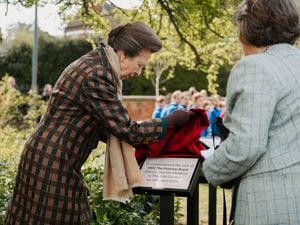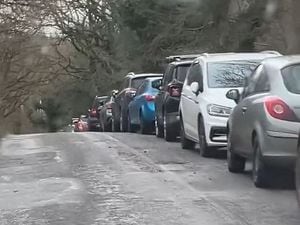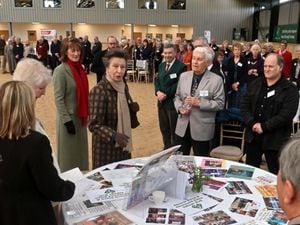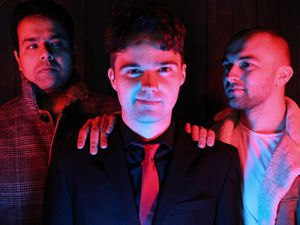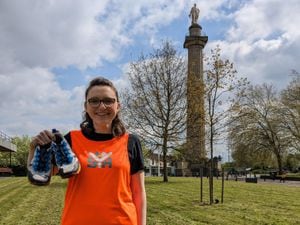Stay safe on Shropshire's roads this winter
Cycling on the roads of Shropshire can be one of life's joys – but can also be your worst nightmare.
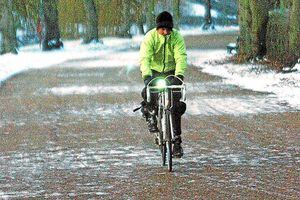
Last week Tony Hewson, an 80-year-old former Tour of Britain winner, became the latest bike rider to be injured while cycling through Shropshire.
Fortunately, despite suffering serious head injuries, he was able to return to his home in Craven Arms, but others are not so lucky.
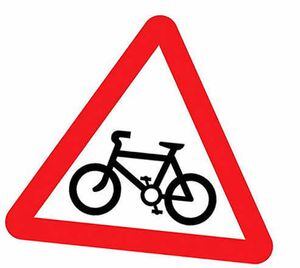
Cyclists should adopt the 'Coast' road safety principles, a check-list of measures aimed at saving lives and reducing casualties on our roads:
Concentrate: Focus on the driving task and avoid distractions such as mobile phones.
Observe: Read the road actively and scan for vulnerable road users.
Space: Always leave at least a two-second gap between you and the vehicle in front on a dry road. In the wet this needs to be at least doubled.
Anticipate: Expect the worst and be prepared. Always think: what if?
Time: Dont rush, plan your journey and allow yourself plenty of time to think, plan and act. Rushing can lead to poor decisions and a possible collision.[/breakout]
The crash happened in Corvedale Road, Craven Arms, the same location where 59-year-old teaching assistant John Searle was killed two years ago.
Mr Searle's bike was clipped by the wing mirror of a car, before being hit by a van and another car.
It should be stressed that both drivers involved in the accident involving Mr Searle, 50-year-old Pamela Willocks and 54-year-old Russel Davies, were last week cleared of causing death by careless driving.
But with winter almost upon us, a Shropshire road safety expert says motorists and cyclists can both take a few simple steps to make life a lot safer on the roads, and hopefully reduce the number of casualties on our roads.
Every year, about 19,000 cyclists are killed or injured on Britain's roads.
About half of cyclist fatalities take place on rural roads, and three quarters happen at, or near, a road junction. And the Royal Society for the Prevention of Accidents says these figures maybe just the tip of the iceberg, as they only apply to crashes reported to police.
Alan Prosser, a director of the Telford-based TTC Group which provides training for 300,000 road users every year, says sticking to the rules of the road can make life safer for cyclists and motorists alike.
Mr Prosser says one of the biggest problems is with motorists failing to judge the distance a car continues to travel when the brakes are applied.
"A car moving at 60mph travels about 90ft or 30 metres every second," he says.
"Visualise three buses, one behind the other and you can see the necessary stopping distance.
"At 30mph, the stopping distance is halved to around 45ft or 15 metres, a bus length and a half."

In modern cars, many of which are equipped with luxuries such as heated seats and air conditioning, it is very easy to feel isolated from conditions outside, and this makes it all the more important for drivers to maintain concentration.
"Drivers can feel very detached from the outside environment and misjudge these distances," he says.
"If you are following traffic then you should be at least two seconds behind in dry weather and further behind in wet conditions.
"This gives us time to respond to any incident."
Mr Prosser, who is 56, is well versed in the importance of road safety. With more than three decades' experience, he has served as head of road safety at Derbyshire County Council, and before that worked for Staffordshire County Council where he managed one of the country's first National Driver Improvement schemes.
Today, his role at TTC sees him overseeing training for both cyclists and car drivers, and he says it is also vital that motorists take extra care to watch out for vulnerable road users such as cyclists and pedestrians.
"We have to share the road space safely with each other. Be aware of what is around you. Keep a safe distance and then you can stop in plenty of time," he says.
They are out on two wheels with their environmentally friendly method of travel which also ticks the boxes for keeping fit and healthy.
They rub shoulders in the gloom with impatient cars and lorries who often do not overtake so much as squeeze by.
Into this cocktail of deadly risk venture youngsters pedalling their way to school. Even the most experienced are in danger, as evidenced by the fact that Tony Hewson, an 80-year-old former Tour of Britain winner, was injured in Craven Arms the other day, a road which earlier claimed the life of a bike rider.
So what is the solution? It is easy to say, but not easy to do – separate the cyclists from the cars and lorries.
Even in a new town like Telford, which was built with dedicated cycle paths, the network is a hotchpotch, where you can get from A to B, but if you want to get to C you will have to break out onto the roads.
He says that failing to adapt driving styles for weather conditions is another mistake which many drivers make.
"Motorists should slow down to an appropriate speed, such as low-lying dazzling sunlight in winter, made more hazardous by reflections from surface water on the road.
"Pull the sun visor down, wear sunglasses to cut out most of the glare and keep sunglasses in the car. Keep your windscreen clean to reduce low sun glare and be cautious."
In such conditions, it is also wise to pay extra attention to the rear-view mirror as well, as the drivers behind are equally likely to be blinded by the sun.
He also says cyclists should also do their bit to ensure they can easily be seen by other road users – and not just at night.
"Cyclists must be clearly visible with front lights and flashing rear bike lights even in daylight," says Mr Prosser.
"Also, wear fluorescent clothing to ensure you can be seen."
It is worth noting that 80 per cent of accidents involving cyclists take place during daylight hours.
And Mr Prosser says there is one simple road safety step that all road users should take, before even venturing out of the house.
"They should re-read the Highway Code," he says.
Mr Prosser adds that motorists can improve their driving skills by taking a "refresher" driving course.
"Companies can improve staff safety and reduce insurance costs by enrolling staff on corporate driving," he says. "There are also courses for safer cycling for commuters and leisure cyclists."
Rospa says the number of casualties has risen in recent years, as the number of people taking up cycling has grown.
"The majority of cyclist casualties are adults, with less than one fifth being children," says a spokesman. "Cycling accidents increase as children grow older, with 10 to 15 year old riders being more at risk than other age groups, including adults until about the age of 60 years.
"To some extent, this reflects increased cycling as children grow older followed by a switch to motorised transport from the late teens onwards. It also coincides with the age when children attend secondary school, and may indicate riskier behaviour by this age group."
As if to underline the dangers for cyclists on our increasingly busy roads, U2 frontman Bono also became a casualty last week, as he tried to avoid a collision with another cyclist in New York. The rocker broke his arm in six places and fractured his eye socket, hand and shoulder blade. The arm fracture involved a five-hour operation and was repaired with three metal plates and 18 screws.
Mr Hewson's daughter Justine says she would like to see more signs warning motorists to look out for cyclists, as well as making drivers more aware of cyclists in general.
"It's an extremely dangerous road. Not only push bikes, but motorbikes and cars have been involved in accidents there," she says.
"It's very twisty and bendy and we want to raise awareness for all road users – it is a designated cycle route, it really should be a safe place, not a death trap."

